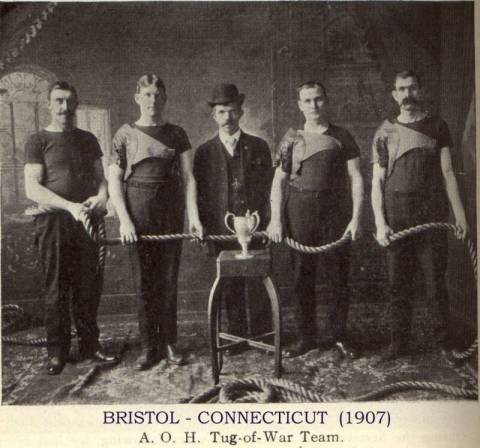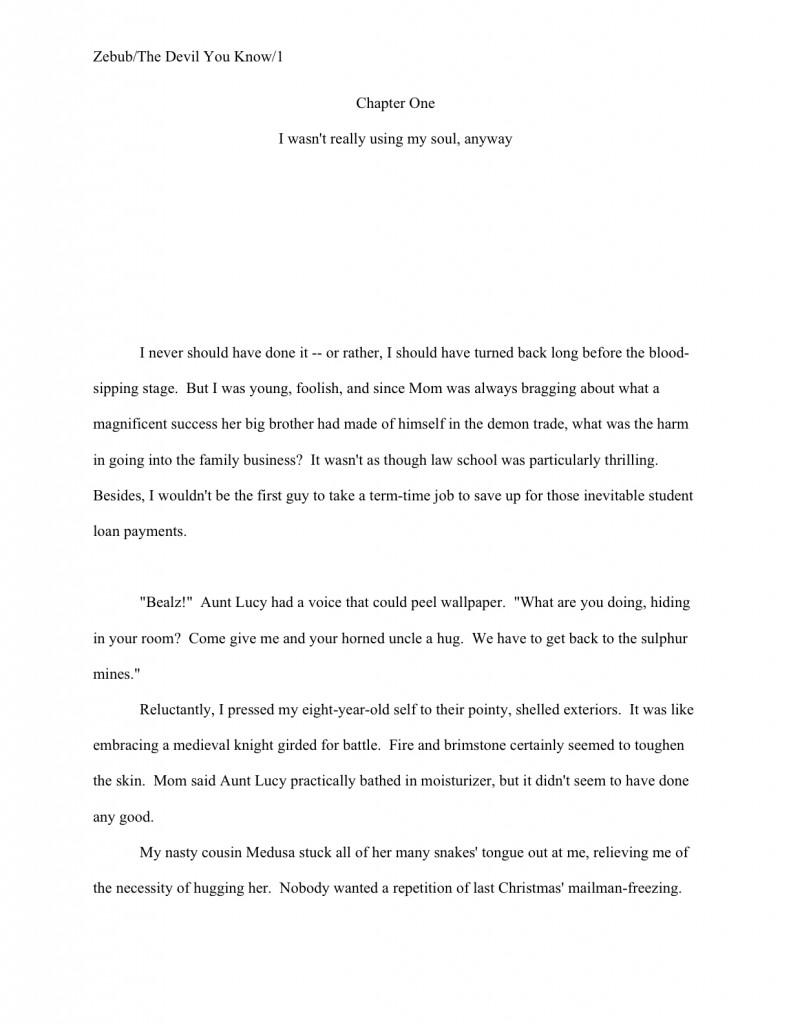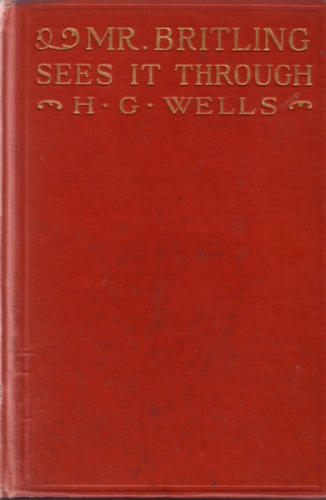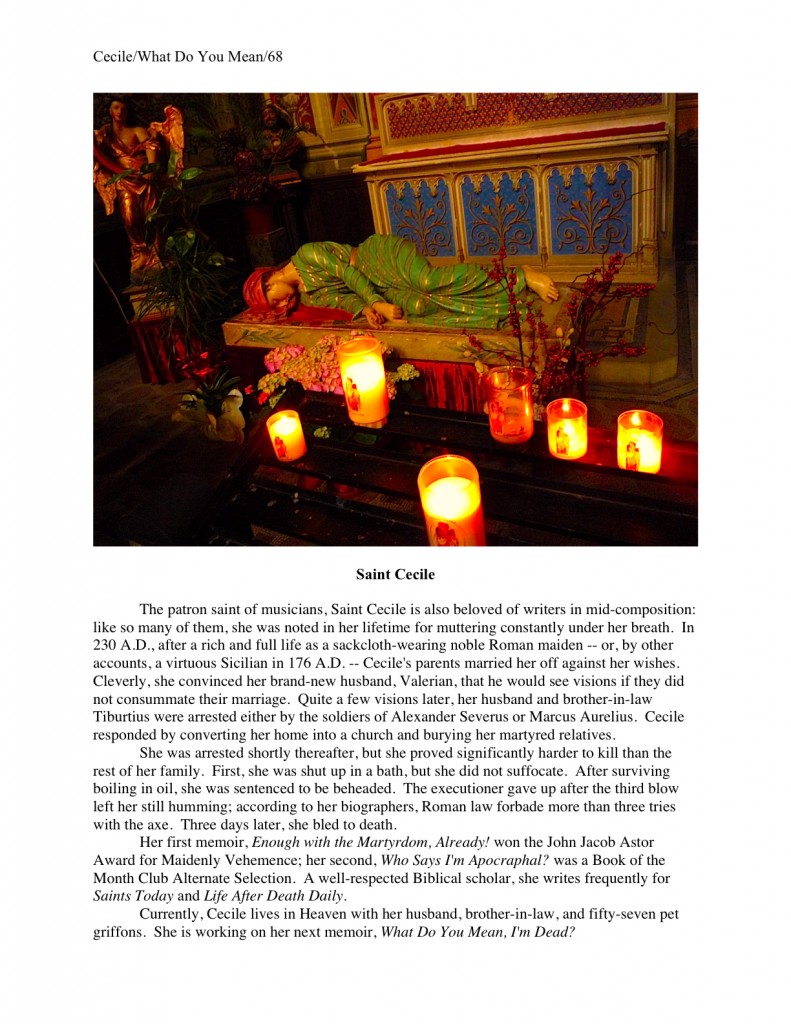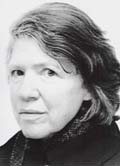
I’m taking a break from my ongoing series on how getting published does and doesn’t work — as those of you following the series may have noticed with alarm, an awful lot of the common wisdom on the subject just isn’t true, or at any rate, just isn’t true anymore — to address a question that I get about once per month from aspiring writers. The latest iteration, courtesy of a comment from intrepid reader Virginia a few days back:
Here’s my question: I submitted only two queries to two agents. One got back to me quickly and did ask for exclusive right to review. A few days after I agreed to this, the second agent replied and asked for pages. I don’t want to violate my agreement, but how do I tell the second agent I’m really happy she wants to see more but she has to wait?
Queriers end up in this kind of dilemma all the time, often without understanding how they got there. An exclusive is always a good thing, right, a sign that an agent was unusually eager to see a queried or pitched book, and thus decided to bypass her usual method of requesting manuscripts?
Not always, no. Sometimes, a request for an exclusive genuinely is the result of an agent’s being so excited by a query or pitch (especially if that book has just won a contest) that she’s afraid that another agent will snap it up first. But far more often, it is the natural and should-have-been-expected outcome when a writer queries an agency that has an exclusives-only policy that the querier simply didn’t do enough research on the agency to know about, and so is surprised by the request.
Especially gobsmacked by this (usually predictable) outcome: queriers who do what virtually every aspiring writer asked to submit materials does (and what I suspect occurred here), sending out requested pages immediately upon receipt of the request. Overjoyed at what they assume (in this case, wrongly) will be the only interest their queries will generate, many multiply-querying writers don’t pause to consider that multiple requests for manuscripts are always a possible outcome while sending out simultaneous queries. So is a situation where one of those agents requests an exclusive.
This is why, in case any of you inveterate conference-goers have been curious, agents, editors, and those of us who teach classes on marketing writing invariably sigh when an aspiring writer raises his hand to ask some form of this particular question — and it’s not for the reason that other aspiring writers will sigh. (The latter will sigh because they wish they had this problem.) They will sigh because they’re thinking, “Okay, did this writer just not do his homework on the agents he approached? Or is he asking me to tell him that he can blithely break the commitment he’s made to Agent #1?”
That’s why everyone else will sigh. I, however, sigh whenever I hear this question because I think, “Okay, I have to assume that the questioner is someone who hasn’t read any of my blog posts on querying or submission, as much as that possibility pains me to consider. But since I have no fewer than four explicitly-named categories on my archive list — conveniently located at the bottom right-hand side of my website’s main page: EXCLUSIVES AND MULTIPLE SUBMISSION, EXCLUSIVES TO AGENTS, SIMULTANEOUS SUBMISSIONS, and WHAT IF MORE THAN ONE AGENT ASKS TO SEE MY MANUSCRIPT? — directly aimed at answering this question, and eight more that deal with it within the larger context of submission (AFTER YOU RECEIVE A REQUEST FOR PAGES, AFTER YOU SUBMIT, HOW LONG BEFORE THE REQUEST FOR PAGES EXPIRES? HOW SOON MUST I SEND REQUESTED MATERIALS? INDUSTRY ETIQUETTE, IS IT OKAY TO SUBMIT TO SEVERAL AGENTS AT ONCE? and REQUESTED MATERIALS), as well as a dramatically-reenacted scenario in the Industry Etiquette series, I also have to assume that the questioner is in a situation that I have managed to overlook addressing in any of these posts. So I shall eschew the temptation just to send the questioner to any or all of those categories, try to understand how and why this situation is unique, and answer the darned question for the 475th time.”
Yes, I can think with that much specificity in mid-sigh, thank you very much. It’s just one of my many talents.
All that being said — or at any rate thought loudly — it actually isn’t fair to leap to the conclusion that if aspiring writers read agents’ websites and agency guide listings more thoroughly, they would never end up in this situation. Sometimes, this request does come out of a genuinely blue sky, whacking a conscientious multiple querier or submitter right in the noggin.
In fact, it seems to be happening to aspiring writers more and more these days, and for good reason: as a group, you’re querying more widely. That’s a good thing.
Now that many agencies routinely just don’t respond to queries at all if the answer is no, it would be equally silly for a savvy writer to query them one at time and to wait to hear back from all of those simultaneous query recipients before submitting to the first agent who asks to see pages.
Often, the writer simply will not know that exclusivity is a possibility until an agent asks for it, and the request is seldom formulated in a manner that informs a writer not already aware of the fact that she can say no. Or put a time restriction on the exclusive, if she grants it at all.
All of these things are true, incidentally. Unless an agency informs would-be queriers in advance that it has an exclusives-only submission policy, a submitting writer is under no obligation to grant a request for an exclusive to an individual agent. And, as with any other favor, the writer has the right to place conditions on it if she grants it.
But widespread misunderstanding of how exclusives work is not the primary reason it isn’t fair for the pros to be dismissive of writers in this situation. We should all have sympathy, because 99.999% of the time, what an aspiring writer asked for an exclusive hears is not, “Okay, this sounds interesting and marketable, but I don’t want to have to rush to beat competing agents in reading the manuscript. Please remove the necessity of my having to hurry by agreeing not to show it to anyone else until I’ve gotten back to you.”
Which is, by the way, what a request for exclusivity means, at base. Deflating to think of it that way, isn’t it?
What 99.999% of aspiring writers in this situation hear is “Oh, my God — this is the most exciting book premise/pitch/query I’ve ever heard. I’m almost positive that I want to represent it, even though I have not yet read a word of the manuscript or book proposal. If you grant my request, I’m going to clear my schedule so I may delve into this submission the nanosecond it arrives in my office.”
And then the giddy aspiring writer is astonished when weeks or months pass before the agent makes a decision, precisely as if there had been no exclusive involved. The only difference, from the writer’s point of view, is that she was honor-bound not to approach other agents until she heard back.
Pardon my asking, but what precisely did the writer gain by granting that exclusive? And does anybody out there have a good suggestion for a new category title that would more quickly catch the eye of (a) submitters who find themselves in this situation, (b) queriers or pitchers who MIGHT find themselves in this situation soon, and (c) readers not patient enough to scroll through a couple of hundred categories to find what they want?
Okay, so the last is a tall order for a 40-character max category title. Believe it or not, the main reason there are so many categories is because I keep hearing from panicked writers who did not instantly find what they were seeking.
I think that a couple of factors contribute the confusion so many agent-seeking writers seem to feel on this subject. First, many writers confuse initial interest with a commitment — why would an agent ask to see a manuscript exclusively, they reason, unless they already thought they might want to sign the author?
The short answer: typically, an agent won’t ask for an exclusive (or for pages, for that matter) unless he thinks representing it as a possibility; since, however, agents who ask for exclusives seldom make the request of only one writer, a writer should not assume that his is the only exclusive on the agent’s desk.
If that last bit made your stomach drop to somewhere around your knees, don’t feel blue, or even slightly mauve: the vast majority of writers who have ever been asked for an exclusive peek at their work were under the same misconception. The temptation to believe the request means more than it actually does is vast.
Compounding this misconception is the cold, hard fact that when aspiring writers agree to an exclusive, they don’t necessarily understand what it actually entails. So let’s invest some blog space into going over the basics.
Hey, maybe this post does belong in my Getting a Book Published Basics! Who’d have thought it?
An exclusive, for those of you new to the concept, is when a writer agrees to allow an agent a specific amount of time to consider representing a particular manuscript, during which no other agent will be reviewing it. In practice, both the agent and the writer agree to abide by certain rules during the specified period:
– ONLY that agent will have an opportunity to read the materials;
– no other agent is already looking at it;
– the writer will not submit it anywhere else;
– in return for this significant advantage (which, after all, pulls the manuscript out of competition with other agents), the agent will make a legitimate effort to read and decide whether or not to offer representation within the specified time period.
Is everyone clear on the rules? If not, please leave a comment with a question — just the second I come up with a brand-new category name covering this particular dilemma, today’s post is going to be popping into it. So if you ask now, future writers-in-a-bind will enjoy the full benefit of your having asked.
Okay, now that we know what Virginia agreed to do, let’s take a gander at her options. If she wants to play by the rules — and she should, always — her choices are three.
If she specified a time limit on the exclusive — which the agent will very seldom propose spontaneously; it’s not in her interest — the answer is very simple: if less than that amount of time has passed, don’t send the manuscript to anyone else until it has.
What is she to tell the other agent? Nothing, if the agreed-upon length of the exclusive is reasonable — say, between three and eight weeks. Agents are perfectly used to writers taking some time to revise before submitting requested materials. Virginia’s second agent probably wouldn’t blink twice if she didn’t get back to him before then; remember, it’s not as though an agent who requests materials sit there, twiddling his thumbs, until he receives it.
And what would she gain by telling him she’d already promised an exclusive to another agent, other than informing him that she had already decided that if the other Agent #1 offered representation, she would take it? How exactly would that win her Brownie points with #2 — or, indeed, help her at all?
In practice, all waiting on fulfilling the second request means is that Virginia will have an attractive alternative if Agent #1 decides to pass on the manuscript. That’s bad because…?
Oh, wait: it isn’t. Actually, it’s an ideal situation for a just-rejected submitter to find herself occupying. Way to go, Virginia!
Worrying about what might happen to Virginia if Agent #1 doesn’t get back to her within the specified time frame? Relax; she still has three pretty good options, one completely above-board, one right on the board, and the last slightly under it.
First, the high road: about a week after the agreed-upon exclusive expires, Virginia could send Agent #1 an e-mail (not a call), reminding her that the exclusive has elapsed. Would A1 like more time to consider the manuscript solo, or should Virginia send the manuscript out to the other agents who have requested it?
I can already tell you the answer will be the former. The writer doesn’t achieve much by taking the high road, usually, other than a bit of comfort from the fact that the agent hasn’t forgotten her altogether.
The level road is cosmetically similar, but frees the writer more. Virginia could write an e-mail to the agent, informing her politely that since the agreed-upon period of exclusivity has elapsed, she’s going to start sending out requested materials to other agents. Then she should actually do it, informing Agent #2 in her cover letter that another agent is also considering the work.
That way, she gets what she wants — the ability to continue to market her work — while not violating her agreement with Agent #1. All she is doing is being up front about abiding by the terms of the exclusive.
The slightly subterranean but nevertheless justifiable third option would be not to send an e-mail at all, but merely wait until the exclusive has lapsed to send out the manuscript to Agent #2, informing him that there’s also another agent reading it. I don’t favor this option, personally, because despite the fact that Virginia would be perfectly within her rights to pursue it — the agent is the one who breached the agreement here, not the writer — if Agent #1 does eventually decide to make an offer, Virginia will be left in a rather awkward position.
Enviable, of course, but still a bit uncomfortable.
When an exclusive does not carry an agreed-upon time limit — and most don’t — the ethics are more nebulous, the costs to the writer significantly higher. Sometimes enough so that being asked to grant an exclusive turns out to be a liability.
As exciting as a request for an exclusive may be, it does tie the writer’s hands, for precisely the reason Virginia feels conflicted: throughout the duration of the exclusive, the writer agrees not to show the manuscript to any other agent. If, as in Virginia’s case, other agents are also interested, this can mean a substantial delay in getting the manuscript onto their desks — not to mention the fact that if Agent A offers to represent it, B and C may not see it at all.
In an environment where it often takes 3-6 months to hear back on a submission, it’s not all that hard to envision a situation where a writer might actually want to say no to an exclusive, is it?
While you’re pondering the implications, I’ll be changing the subject slightly, to underscore a few points. But never fear: I’m going to talk about the perils and escape hatches of the unlimited exclusive tomorrow; it’s too complex to toss off in just a few paragraphs.
For now, let’s concentrate on the kind of exclusives a savvy writer should be delighted to grant. To that end, I want to make absolutely certain that each and every querier and submitter out there understands two things — no, make that three:
1) As flattering as a request for an exclusive is to an aspiring writer, granting it is optional;
2) Since by definition, a writer cannot submit to other agents during the exclusive period — yes, even if the writer queried the others first — it’s ALWAYS a good idea to set a time limit;
3) Since granting it limits the writer’s options, it’s best reserved for situations where one’s top-choice agents are interested in the book.
Why limit it to your favorite picks? Try to think of granting an exclusive as if you were applying for early admission to an Ivy League school: if the school of your dreams lets you in, you’re not going to want to apply to other universities, right?
By applying early, you are saying that you will accept their offer of admission, and the school can add you to its roster of new students without having to worry that you’re going to go to another school instead. It’s a win/win, in other words.
So if the best agent in the known universe for your type of writing asks for an exclusive, you might genuinely want to say yes. But if you have any doubt in your mind about whether Harvard really is a better school for your intended studies than Yale, Columbia, or Berkeley — to mix my metaphors again — you might want to apply to all of them at the same time, so you may decide between those that do admit you.
To put it another way, if you are asked for an exclusive because your work is sought-after, it is up to you whether you would prefer to go steady right off the bat or date around a little. Got it?
If not, I can keep coming up with parallel cases all day, I assure you. Don’t make me start sending you to past posts.
That doesn’t mean you should necessarily say no to this type of exclusivity request, but if you say yes, set a reasonable time limit on it, so you don’t keep your book off the dating market too long. This prudent step will save you from the unfortunately common dilemma of the writer who granted an exclusive seven months ago and still hasn’t heard back.
Yes, in response to that gigantic collective gasp I just heard out there: one does hear rumors of agents who ask for exclusives, then hold onto the manuscript for months on end. Within the past couple of years, such rumors have escalated astronomically.
Set a time limit. Four to six weeks is ample.
No need to turn asking for the time limit into an experiment in negotiation, either: simply include a sentence in your submission’s cover letter along the lines of I am delighted to give you an exclusive look at my manuscript, as you requested, for the next month.
Simple, direct — and trust me, if the agent has a problem with the time you’ve specified, s/he’ll contact you to ask for more.
Of course, protecting your ability to market your work isn’t always that simple: negotiation is not possible with the other type of exclusive request, the kind that emerges from an agency that only reviews manuscripts that no one else is; the writer is not offered a choice in the matter. Consequently, a request for an exclusive from these folks is not so much a compliment to one’s work (over and above the sheer desire to read some of it, that is) as a way of doing business.
In essence, exclusive-only agencies are saying to writers, “Look, since you chose to query us, you must have already done your homework about what we represent — and believe us, we would not ask to see your manuscript if we didn’t represent that kind of writing. So we expect you to say yes right away if we make you an offer.”
Noticing a homework theme in all of these unspoken assumptions? Good. Let me pull out the bullhorn to reiterate: because agents tend to assume that any serious writer would take the time to learn how the publishing industry does and doesn’t work — oh, if only some reputable blogger would run a series on THAT, eh? — querying and submitting writers who don’t do their homework are much more likely to get rejected than those who do.
Okay, bullhorns down; back to the issue at hand. Why might an exclusive submissions policy be advantageous for an agency to embrace?
Well, for one thing, it prevents them from ever having to experience the fear associated with the first type of exclusive request. If you send them pages, they may safely assume that you won’t be e-mailing them in a week to say, “Um, Agent Q has just made me an offer, slowpoke. I still would like to consider your agency, so could you hurry up and finish reading my manuscript so you can give me an answer? As in by the end of the week?”
Okay, so you wouldn’t really be that rude. (PLEASE tell me you wouldn’t be that rude.) But let’s face it, agents who don’t require exclusive submissions do receive these types of e-mails fairly often. And nobody, but nobody, reads faster than an agent who has just heard that the author of the manuscript that’s been propping up his wobbly coffee table is fielding multiple offers.
Agencies who demand exclusivity are, by definition, unlikely to find themselves in a similar Oh, my God, I have to read this 400-page novel by tomorrow! situation. After even the third or fourth panicked all-nighter, exclusives might start to look like a pretty good policy.
What does the writer get in return for agreeing not to submit to others for the time being? Not a heck of a lot, usually, unless the agency in question is in fact the best place for his work. But if one wants to submit to such an agency, one needs to follow its rules.
Fortunately, agencies that maintain this requirement tend to be far from quiet about it. Their agents will trumpet the fact from the conference dais. Requires exclusive submissions or even will accept only exclusive queries will appear upon their websites, in their listings in standard agency guides, and on their form replies requesting your first 50 pages.
(Yes, in response to that shocked wail your psyche just sent flying in my general direction: positive responses are often form-letters, too, even when they arrive in e-mail form. I sympathize with your dismay.)
If exclusives-only agencies had company T-shirts, in short, there would probably be an asterisk after the company’s name and a footnote on the back about not accepting simultaneous submissions. If they’re serious about the policy, they’re serious about it, and trying to shimmy around such a policy will only get a writer into trouble.
Do I feel some of you tensing up again? Relax — agencies with this requirement are not very common.
Why? It limits their querying pool. Because they require their potential clients to bring their often protracted agent search to a screeching halt while the submission is under consideration, such agencies are, in the long run, more time-consuming for a writer to deal with than others. As a result, many ambitious aspiring writers, cautious about committing their time, will avoid querying agencies with this policy.
Which, again, is a matter of personal choice. Or it is if you happened to notice before you queried that the agency in question had this policy.
Hey, check their T-shirts. Because I assure you, no one concerned is going to have any sympathy for a writer complaining about feeling trapped in an exclusive. They’ll just assume that he didn’t do his homework.
So check submission policies before you query, everyone; it can save you a world of chagrin later.
Thanks for asking the question, Virginia; I’ll discuss other aspects of your dilemma next time. To you and all of your fellow conscientious writers, keep up the good work!


